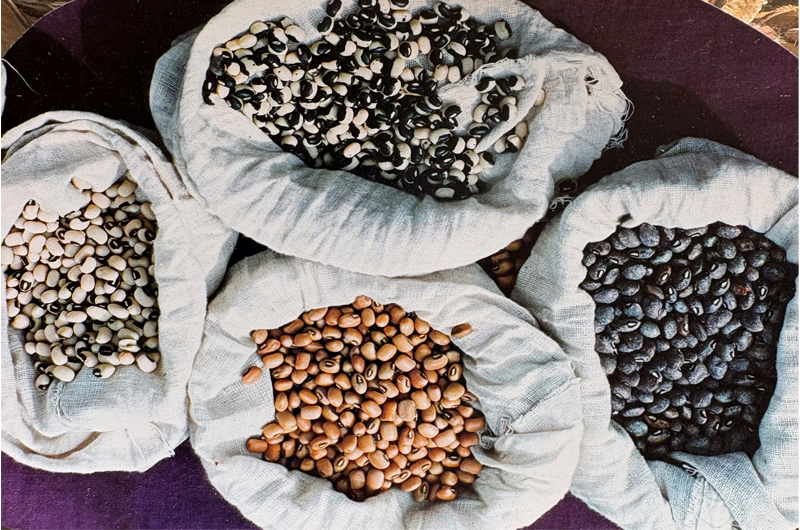Traditional agricultural wealth and wisdom are being brought back from the brink thanks to a voluntary organisation that is working with farmers in remote areas in Central India to preserve and protect indigenous species. Clearly, there is need for many more efforts of this kind, as well as for protecting the seeds sovereignty of farmers and their right to conserve, protect, grow and exchange seeds without restrictions, says Bharat Dogra
In traditional farming, one of the most important tasks and responsibilities was selecting, saving and conserving seeds. In several rural communities, women farmers had an important role as well as special skills and understanding related to this. Several tribal communities were particularly known for their seed conservation efforts. While this has been well recognised for a long time, what is often not appreciated adequately is the extent of advancement of the skills and wisdom of traditional communities in matters relating to seed conservation.
R.H. Richharia, former director of the Central Rice Research Institute of India, was among the few senior scientists who interacted with tribal communities and people in remote villages, and it enabled him to have an understanding of the seed conservation strengths of these people. Richharia, who was one of the earliest and youngest scientists from India to get a doctorate in Botany from Cambridge, went on to lead a team to compile over 17,000 cultivars of rice grown in India.
Richharia was particularly impressed by the ability of tribal communities to remember and pass down knowledge of the characteristics of hundreds of rice varieties and cultivars, including their medicinal properties, through generations. He noted that some of the learnings were captured in the form of rituals observed as a part of daily life by most community members and farmers. However, today, though the traditional skills of farming communities in seed conservation need to be strengthened and encouraged, unfortunately exactly the reverse has happened.
From the mid-1960s onwards, the Green Revolution brought in exotic varieties of plants and seeds, uprooting the greater diversity of existing crop-varieties grown in time-honoured systems of mixed farming and rotations on the basis of collective wisdom and experience. While this sudden change was harmful, the situation worsened with powerful corporate interests, including multinational companies and the research institutes allied to them, trying to establish control over farming and food by imposing patent and intellectual property rights over life forms and plant varieties, and promoting highly harmful technologies.
As crop and seed diversity started vanishing from the fields, the corporate entities stole the accumulated work of generations of farmers to release their patented varieties, sometimes after manipulating them genetically to increase their control and monopoly over them. All this was sought to be promoted under the name of ‘science’ and ‘development’ and the efforts were even recognised with awards. Once the traditional farming communities started realising the extent of the harm being caused, they again started assuming the responsibility of strengthening their seed conservation efforts.
As the displacement of farm and seed diversity was not complete, particularly in the more remote villages, several communities could still take up the task of conserving seeds. Despite the harm that had been caused, and the legal hurdles created, the communities found that if they acted in unity and wisdom, seed diversity could still be protected. Hence, in recent years, several communities have taken up this task with a sense of urgency.
This writer was present at a recent such effort, in the form of a seed festival organised by a voluntary organisation, Vaagdhara, in parts of three states in Central India. The mostly young men and women members of this organisation enthusiastically organised nearly 90 gatherings of tribal communities, in turn reaching out to people of about a thousand villages and hamlets. People assembled with collections of various seeds that have become more difficult to find of late, and shared the seeds and/or knowledge relating to them with farmers of other villages. I could see that the villagers were enthused by the effort and wanted such seed festivals to be organised regularly. Women in particular were very happy.
Earlier, in the course of my work in the Himalayan Region, particularly in villages of Garhwal, I was able to learn much from the efforts of Beej Bachao Aandolan (Save the Seeds Movement). They led to a much better appreciation of preservation of seed diversity on the basis of traditional mixed farming systems such as barahanaja (growing 12 or more crops together on a small plot of land to ensure balanced nutrition and self-reliance in food). Earlier, some officials and even ‘scientists’ were speaking in terms of uprooting such excellent traditional systems they considered “backward”, much in line with the Green Revolution way of thinking.
The Save the Seeds Movement helped to confront and change this idea. The movement organised several foot marches, people going from one village to another, carrying rare seeds which they shared with farmers in other villages. At the same time, they collected information on the seeds which had been preserved and saved in the host villages. The valuable contributions made by women farmers were also highlighted during these initiatives.
(The writer is a senior freelance journalist and author who has been associated with several social movements and initiatives. He lives in New Delhi.)



 from Webdoux
from Webdoux